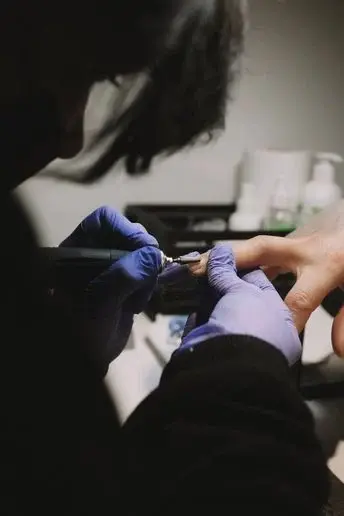|
One of the most frequently seen buildings in any town is a nail salon. It seems you can't go more than a few blocks without seeing one in most cities and if you frequent them, you've probably noticed that many of them are owned and operated by Vietnamese-Americans. There may have been some curiosity about this floating around or maybe people simply assumed it was always this way so they didn't ask. But it turns out, Vietnamese owned nail shops boomed after the Vietnam War when America had an influx of refugees from the small country. Soogia, a small business owner and social media creator took to the internet to explain exactly why so many nail salons are owned by Vietnamese people after several followers asked her the question. Stream the documentary "Nailed It" on Plex
8/22/2024 There's A Lot Of Fake Hair In HollywoodMale Celebs Who Have Been Candid About Using Wigs And Surgery To Get Their Locks
"People were absolutely obsessed with my hair, or lack of it, for years. Then I started wearing a wig and virtually no one’s mentioned it since.” As of January 1, 2025, California will no longer allow nail salons to have independent booth renters operating in their salons and all nail techs at any salon will be classified as employees!
Until now, our industry has been shielded from AB 5, because we worked to get a legal carve-out for hair, skin and nail workers and barbers when that law was working its way through the Legislature in 2019. Unfortunately, due to the Legislators’ concern about one segment of our industry, nail techs and their establishment owners were only given a temporary exception that is set to expire this coming January. ** Fact: Assembly Bill 5 (AB5) went into effect January 1, 2020 in California, and has real implications for the beauty service industry. AB5 requires certain employers to classify and treat all workers, including independent contractors, as employees, however, certain occupations are exempt from AB 5 regulations, including hairdressers, manicurists, licensed barbers, and estheticians. That said, even though hair salons are exempt, there are still other tests that dictate how employees are classified The mullet and the man-bun. The buzz and the bowl. The Caesar and the crew. The Mohawk, the faux-hawk, the no-hawk. Men’s hair, particularly young men’s hair, has enjoyed a rich history—some moments have been as high as a pompadour; others, we’d just as soon comb over. But what’s happening today isn’t just another post on the Pinterest board of boys’ hair.
“Imagine a piece of broccoli on the top of your head—that’s the general idea,” says hairstylist Chris McMillan, owner of Chris McMillan the Salon, in Beverly Hills. “You know, some of these boys are actually getting perms,” explains Saviano. “You have to remember that the technology of perms hasn’t changed since we were young, so you have all these boys willing to sit with perm rods on their head in the salon for two and a half hours. They’ll do whatever it takes to get the curls.” That's not to say customers should feel completely relieved.
According to the Bureau of Labor Statistics, the price of hair, dental, shaving, and other care products, which are considered their own category, rose 2.3% year-over-year in May. Still, those prices are behind the general trend. Overall inflation increased 3.3% year-over-year in May. For shoppers in the shampoo or razor aisle, it's ultimately up to preference. |
Hair by BrianMy name is Brian and I help people confidently take on the world. CategoriesAll Advice Announcement Awards Balayage Barbering Beach Waves Beauty News Book Now Brazilian Treatment Clients Cool Facts COVID 19 Health COVID 19 Update Curlies EGift Card Films Follically Challenged Gossip Grooming Hair Care Haircolor Haircut Hair Facts Hair History Hair Loss Hair Styling Hair Tips Hair Tools Health Health And Safety Healthy Hair Highlights Holidays Humor Mens Hair Men's Long Hair Newsletter Ombre Policies Procedures Press Release Previous Blog Privacy Policy Product Knowledge Product Reviews Promotions Read Your Labels Recommendations Reviews Scalp Health Science Services Smoothing Treatments Social Media Summer Hair Tips Textured Hair Thinning Hair Travel Tips Trending Wellness Womens Hair Archives
June 2025
|
|
Hey...
Your Mom Called! Book today! |
Sunday: 11am-5pm
Monday: 11am-6pm Tuesday: 10am - 6pm Wednesday: 10am - 6pm Thursday: By Appointment Friday: By Appointment Saturday: By Appointment |







 RSS Feed
RSS Feed